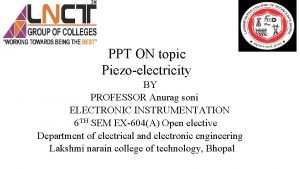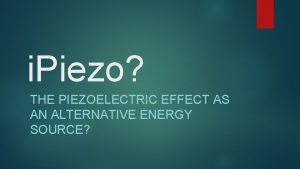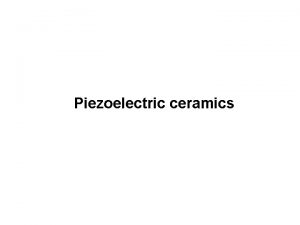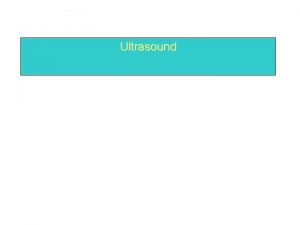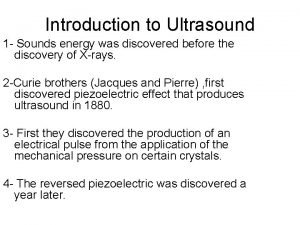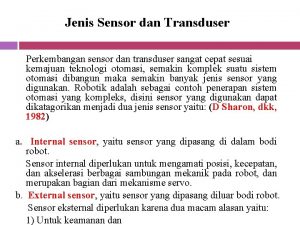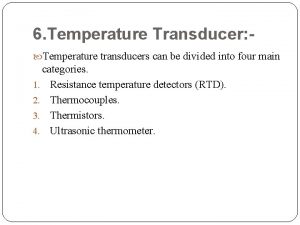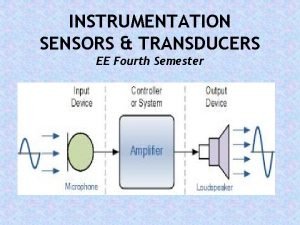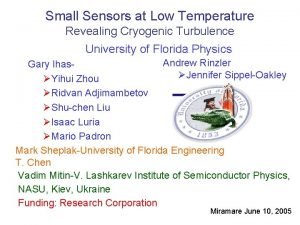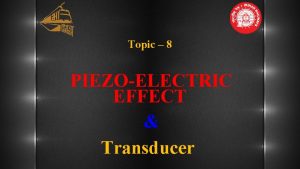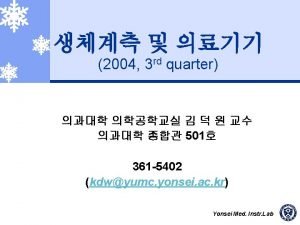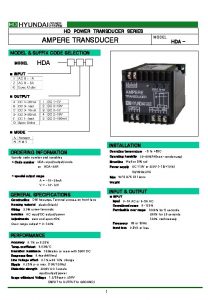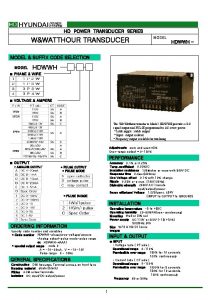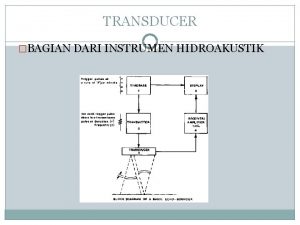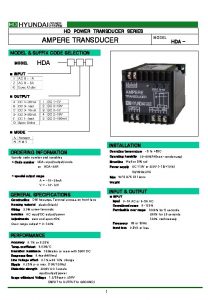Topic 8 PIEZOELECTRIC EFFECT Transducer Piezoelectric Effect 00











- Slides: 11

Topic – 8 PIEZO-ELECTRIC EFFECT & Transducer

Piezoelectric Effect 00: 23 § The Word piezo is derived from Greek word “PIEZIN” which means to squeeze or press. § The ability of certain materials, when they are subject to mechanical force (stress) an electrical charge (voltage) on their opposite faces of suitably cut planes develops, this phenomenon is known as the “Piezo-electric effect”. § The Piezo-electric Effect is vice-versa or reversible also. § The inverse Piezo-electric effect is used for generation of ultrasonic waves in the materials. § e. g. Quartz, tourmaline, lead zincronate, PVDC & piezocomposite crystals etc.

Transducer and Piezoelectric Transducer 00: 23 § Transducer is a device that convert one type of energy to another type for various purposes including measurement usually electrical, electronics, electrochemical etc. § The Transducer that convert electrical energy in to sound energy in ultrasonic range and vice-versa is known as Piezoelectric Transducer.

Piezoelectric Transducer 00: 23 § This electro-acoustic transducers are known as “PROBE” in ultrasonic field. § The piezo-electric effect provides a receiver for ultrasonic wave and the inverse effect is used for generating the ultrasonic wave in to the materials.

Transducers 00: 23 • The thickness of the active element is desired frequency of the transducer. determined by the • A thin wafer element vibrates with a wavelength that is twice its thickness. • Piezoelectric crystals are cut to a thickness that is ½ the desired radiated wavelength. • The higher the frequency of the transducer, the thinner the element active.

Transducers 00: 23 • To get maximum energy from transducer an impedance matchinglayerisplaced betweenactiveelementandtheface of the transducer. • Optimal impedance matching is achieved by sizing the matching layer so that its thickness is ¼ of the desired wavelength.

Transducers 00: 23 • This keeps waves that are reflected within the matching layer in phase when they exit the layer. • For contact transducers, the matching layer is made from a material that has an acoustical impedance between the active element and steel. • Immersion transducers have a matching layer with an acoustical impedance between the active element and water.

Transducers 00: 24 • Contact transducers also incorporate a wear plate to protect the matching layer and active element from scratching. • The backing material supporting the crystal has a great influence on the damping characteristics of a transducer. Using a backing material with an impedance similar to that of the active element will produce the most effective damping. • Such a transducer will have a wider bandwidth resulting in higher sensitivity and higher resolution.

Transducers 00: 24 • As the mismatch in impedance between the active element and the backing material increases, material penetration increases but transducer sensitivity is reduced. • The bandwidth refers to the range of frequencies associated with a transducer. The frequency noted on a transducer is the central frequency and depends primarily on the backing material. • Highly damped transducers will respond to frequencies above and below the central frequency.

Transducers 00: 24 • The broad frequency range provides a transducer with high resolving power. Less damped transducers will exhibit a narrower frequency range and poorer resolving power, but greater penetration.

Types of Piezo-Electric Crystals § Natural Crystals § Artificial or Synthetic Crystals (Ceramic Crystals) § Piezo polymers § Composites § Electromagnetic Acoustic Transducer (EMAT) 00: 24 Quartz (Si. O 2) Rochell salt (Sodium Potassium Tarterate) Tourmalline Barium Titanate (Ba. Ti. O 3) Lead Zirconate Titanate (PZT) – Mostly used for Manufacturing the Probes. Lithium Sulphate Lead Meta Niobate Polyvinylidene Fluoride or PVDF 1, 3 composite
 Piezoelectricity ppt
Piezoelectricity ppt Piezoelectric effect
Piezoelectric effect Piezoelectric effect
Piezoelectric effect Piezoelectric effect ultrasound
Piezoelectric effect ultrasound Reverse piezoelectric effect ultrasound
Reverse piezoelectric effect ultrasound Narrow down topic
Narrow down topic Example of specific topic
Example of specific topic Macam macam sensor dan transduser
Macam macam sensor dan transduser Output transducer in communication system
Output transducer in communication system Temperature transducer example
Temperature transducer example Transducers and sensors
Transducers and sensors Cryogenic pressure transducer
Cryogenic pressure transducer
